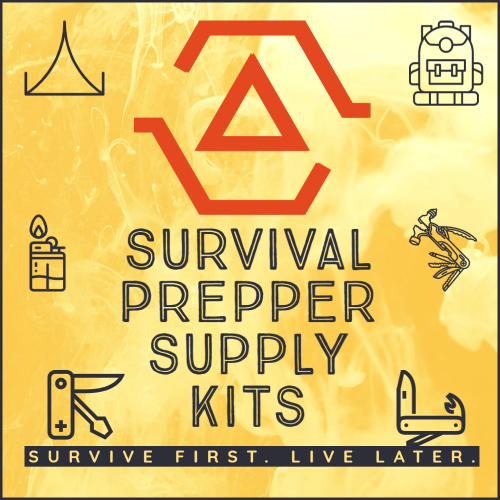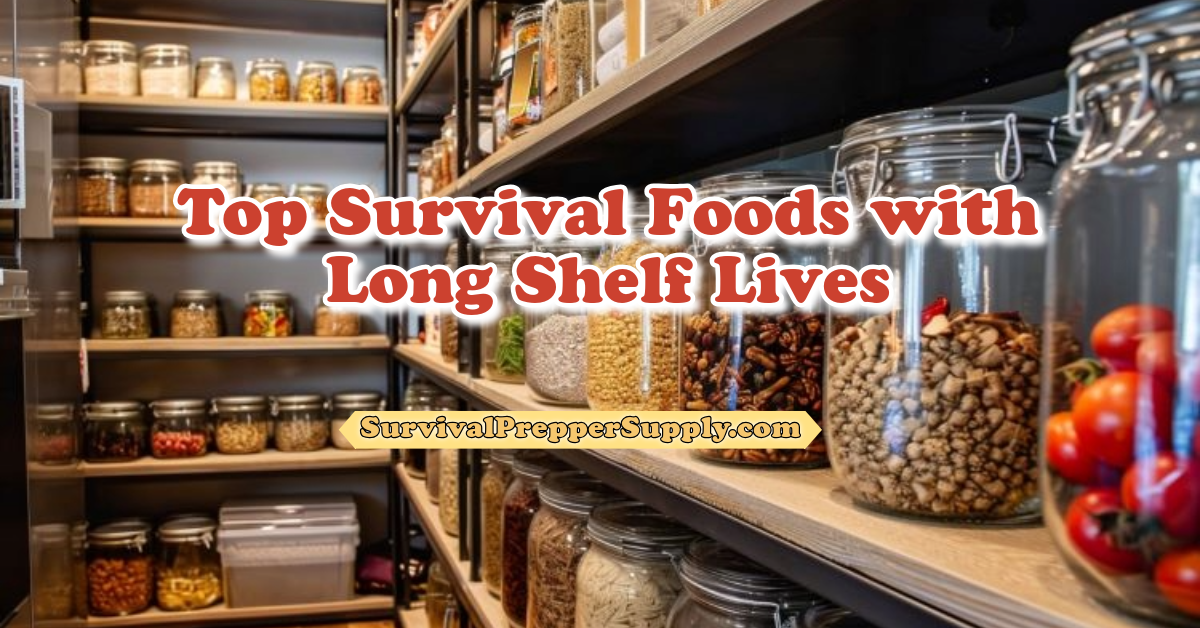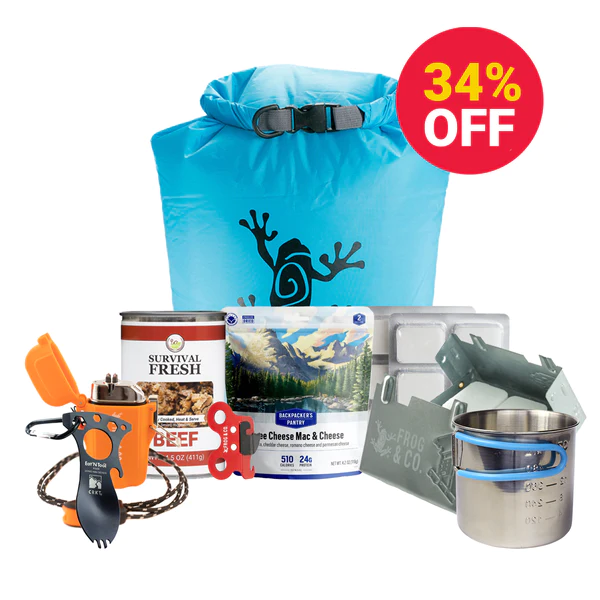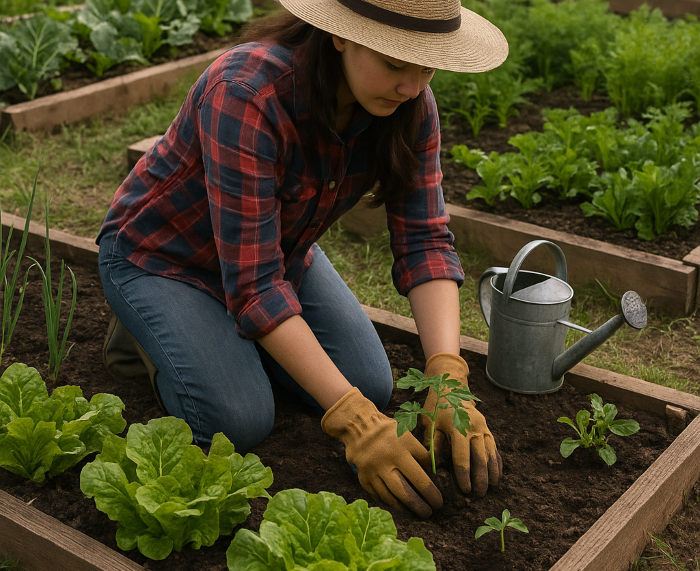Introduction to Food Preservation and Shelf Life
At my age, I understand the importance of knowing which foods last the longest. I’ve experienced disasters that left me without power for a week or more. For as long as I can remember, my pantry was stocked with top survival foods with long shelf lives.
- Grains and Legumes are Your Pantry Staples
- Canned Goods are Nutrition Beyond Freshness
- Dried Foods use an Ancient Preservation Method
- Freeze-dried foods are the New Frontier of Food Storage
- Beyond the Kitchen and into Non-Traditional Food Storage
- Q & A: Expert Answers to Your Shelf Life Queries
- People Also Ask Questions – Addressing Common Curiosities
- Concluding with Embracing Longevity in Your Pantry
This is handy in extreme weather or unplanned events and for managing day-to-day kitchen operations efficiently. In this article, I’ll guide you through the top foods with a significant shelf life and how to store them properly.
Shelf life is influenced by several factors, such as storage conditions, packaging, and the food’s natural composition. These interact to either diminish or preserve quality and edibility over time. Knowing which food items can withstand the test of time stretches your dollar further and reduces food waste.
Human ingenuity has devised various preservation methods over the centuries, from salting and smoking to canning and freeze-drying. Each can substantially extend a food’s natural shelf life, making preserved goods a staple in pantries worldwide. I’ll discuss some of these time-honored and modern techniques.
Please note that this post contains affiliate links, meaning I will get a small commission for qualifying purchases at no extra cost to the buyer.
Grains and Legumes are Your Pantry Staples
I consider grains and legumes the unsung heroes of the pantry. From a simple bag of rice to varieties of pasta and beans, these foods offer a combination of long shelf life and essential nutrition that is hard to match.
- Rice, for instance, is a universal staple that can last up to 30 years when stored properly. Brown rice is the exception due to its higher oil content, which can cause it to spoil faster.
- Pasta, another versatile grain, can be kept fresh for up to two years, making it an excellent long-term food storage option. Put your pasta in the freezer for 2-3 days to kill weevils.
- Legumes are a great source of protein and fiber but are also known for their extended shelf life. Common types, such as lentils, chickpeas, and beans, can remain edible for years when kept dry and airtight.
Store your grains and legumes in cool, dry places to maximize shelf life and maintain quality. Use sealed containers or mylar bags with oxygen absorbers to fend off moisture, pests, and oxidation.
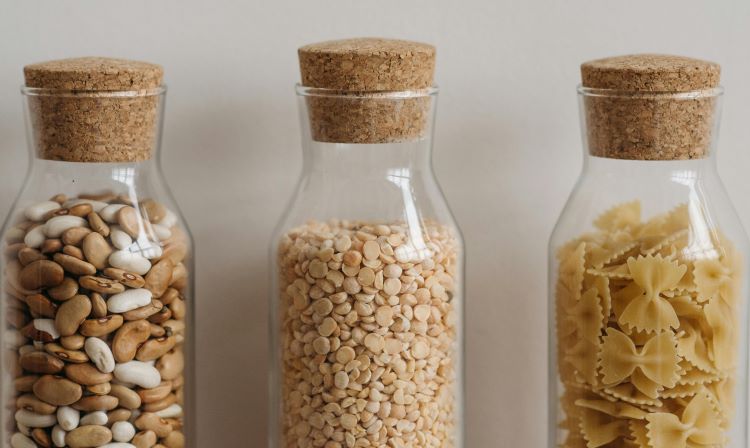
Though often overlooked, rotation is just as important; use the oldest products first to keep your stockpile fresh. I really must work at this. I’m afraid proper rotation only happens every few years in my pantry. Sigh…
Grains and legumes embody practicality. Their long shelf life ensures access to nutritious food, even during unexpected situations. Plus, they are the backbone of countless recipes, offering sustenance and variety to your meals.
Canned Goods are Nutrition Beyond Freshness
Details:
- Long shelf life - The Survival Food included has up to a 25-year shelf life
- Made in the USA - All foods are manufactured here in the USA
- Try out our best-selling Survival Food - Survival Fresh Canned Meat
- Gear to prepare the food - This kit includes over $100 worth of Survival Gear to help prepare the food. Including a Pocket Stove & 12 Extra Hexamine Tablets, A can opener, A spork, A camping cup, and a Tough Tesla Lighter.
- Dry Bag for Storage: Includes a 20L Dry Bag to keep your gear and food dry.
- $150 Value for $99.97: If purchased separately, the value is over $150. That's a savings of over $50!
This Bundle Includes:
1x - Beef Canned Meat by Survival Fresh
1x - Triple Mac & Cheese by Backpackers Pantry
1x - Tough Tesla Lighter - Orange
1x - Pocket Stove & 12 Hexamine Fuel Tablets
1x - Camping Cup
1x - Spork
1x - Emergency Can Opener
BONUS - 1x Blue Dry Bag
20 Liters
The Pocket Stove with Hexamine Fuel Tables is enough to buy this product. It really works well! Anything from Survival Frog is great!
Canned goods are the cornerstone of a well-stocked pantry. Canned foods have the longest shelf life. They are practical, affordable, and offer a reliable source of nutrition, often lasting for years. In this section, I’ll examine the nutritional content of canned fruits and vegetables and the benefits of shelf-stable proteins and share tips for storing and rotating your canned goods to get the most out of their extended shelf lives.
Regarding nutrition, canned fruits and vegetables can be just as healthy as their fresh counterparts. They’re often packed at their peak ripeness, sealing in their vitamins and minerals. However, it’s crucial to be mindful of added sugars and sodium. Opting for items canned in water or natural juices and low-sodium versions of vegetables will ensure that you choose the healthiest options.
Protein is essential to any diet, and canned meats, fish, and beans are excellent sources that can sit on your shelf for a long time. Canned tuna, chicken, and salmon maintain high levels of protein and omega-3 fatty acids, making them valuable additions to any meal. With their high fiber and protein content, beans bring a vegetarian-friendly protein option, which is versatile enough for various dishes.
Storing canned goods is straightforward, but there are a few things to remember to guarantee longevity.
- Keep them in a cool, dry place away from direct sunlight. This helps prevent the cans from rusting or the food inside from degrading.
- A good idea is to follow a FIFO—first-in, first-out approach: Use older cans first and place newer ones at the back of your storage area. This rotation strategy ensures you’ll use products within their ideal time frame.
As we move into dehydrated foods, another timeless preservation category awaits. It’s the perfect transition from the wet world of canned goods to the dry and diverse universe of dried foods. Let’s explore how this ancient method retains the essential nutrients while providing an extended shelf life without refrigeration.
Dried Foods use an Ancient Preservation Method
Dried foods utilize dehydration, one of the oldest and most efficient methods of food preservation. By removing moisture, we thwart the plans of bacteria, yeast, and molds that need water to grow, dramatically extending the food’s shelf life.
- From apple slices to zucchini chips, dried fruits and vegetables retain a significant part of their nutritional content. When stored correctly, they make convenient and healthy snacks lasting for months and sometimes years.
- Herbs and spices also benefit from the drying process. They become highly concentrated in flavor, and their shelf life is remarkably extended, allowing you to flavor your meals with just a pinch for a very long time.
- Dried meats and jerky tell a slightly different story, so you need to be careful. The drying process cures the meat, and while it’s an excellent way to preserve protein, it’s also prone to rancidity if not stored properly; the best storage is in a cool, dark place.
And what if you want to bring dried foods back to life? Rehydrating them is simple. Just submerge them in water – sometimes hot, sometimes cold – and wait a few moments. Suddenly, those once brittle apple rings are plump and ready for a pie or a snack.
Cooks find dried foods incredibly versatile. They can be thrown into soups, stews, and baking mixes without fuss. Their flavors are often more intense, adding depth to a dish that fresh counterparts might not.
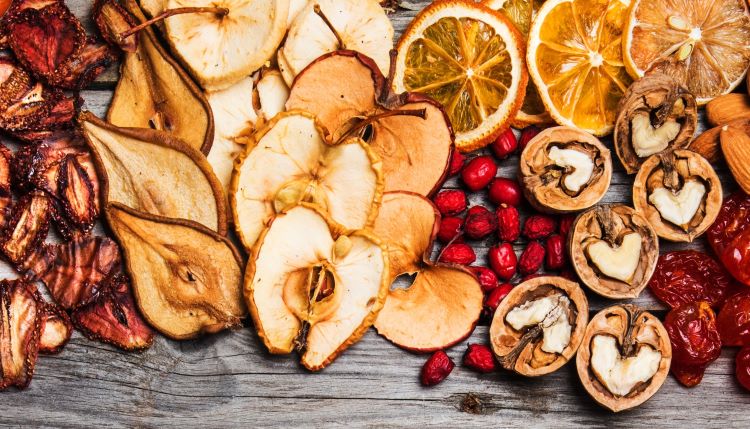
Freeze-dried foods are the New Frontier of Food Storage
Freeze-dried foods have soared in popularity, especially among those serious about long-term food storage. I attribute their near-mythic storage life to the magic of freeze-drying, a process where food is first frozen; then, the surrounding pressure is reduced to allow the frozen water in the food to transition from solid to a gas without passing through the liquid phase. This method locks in foods’ flavors, nutrients, and textures for an incredible amount of time.
Evaluating the nutritional content of freeze-dried foods shows they maintain most of their original value. While some vitamin loss can occur during freeze-drying, the overall nutritional impact is minimal. The result is shelf-stable food that retains much of its original color, taste, and nutritional content, ready to be enjoyed years after packaging. I find freeze-dried fruits, vegetables, and meats ideal for those unexpected life scenarios where fresh food isn’t an option.
I’ve discovered that integrating freeze-dried foods into everyday meals isn’t just for the prepping community; it’s a convenient choice for quick cooking or snack time. Lightweight and compact, these foods need only a dash of water to spring back into their original state. It’s practical for camping trips or astronauts alike, bringing a bit of home dining to the most remote locations. Pretty cool, huh?
Going beyond the kitchen pantry, the next section examines items that aren’t the typical stars of your grocery list yet boast an impressive shelf-life. This knowledge is vital in rounding out your long-term storage plans.
Beyond the Kitchen and into Non-Traditional Food Storage
The shelf life of emergency rations and Meals Ready-to-Eat (MREs) shows their durability and suitability for long-term storage. This provides invaluable insights into preparedness planning and sustainable provisioning, mainly when access to fresh food may be limited or compromised.
Vacuum sealing and controlled atmosphere storage to specialized containers and preservation methods profoundly impact the shelf life of foods.
In our Q&A segment, experts provide insightful answers to common inquiries surrounding shelf life. Discover how vacuum sealing influences the longevity of stored foods, whether shelf life varies across different brands, and the pivotal role of preservatives in extending the freshness of products.
10 mil Mylar Bags for Food Storage for Grains, Dry Aging Bags for Meat-Long Term Food Storage (25 Pack)
MULTIPURPOSE USES:
Mylar bags for packaging have many storage options for various tools and accessories (nails, nuts, bolts, etc.) and an Oxy-Absorber in the bag to prevent the tools from getting rusty.
Isolation from contamination and moisture is a must for keeping fresh and safe. You will get these 5-gallon Mylar bags with a dual seal, which means a zipper seal and a heat seal feature, which can be sealed with a hot iron, so there’s zero chance of anything getting in or out.
Q & A: Expert Answers to Your Shelf Life Queries
- How does vacuum sealing affect shelf life?
Vacuum sealing removes air from the packaging, creating an oxygen-free environment. This absence of oxygen significantly slows oxidation, a primary cause of food spoilage. By reducing exposure to air and moisture, vacuum sealing helps preserve food items’ freshness, flavor, and nutritional quality. It effectively extends shelf life by preventing the growth of mold, bacteria, and other microorganisms that thrive in aerobic conditions.
- Can shelf life vary with different brands?
Yes, shelf life can vary between different brands of the same product. Factors such as ingredients, processing methods, packaging materials, and preservative levels can all influence a product’s longevity. Some brands may prioritize using natural ingredients and minimal preservatives, resulting in a shorter shelf life, while others may employ more robust preservation techniques to extend shelf life. Additionally, variations in storage conditions, transportation, and handling practices can impact the shelf life of products from different brands.
- The role of preservatives in extending shelf life.
Preservatives play a crucial role in extending the shelf life of food products by inhibiting the growth of microorganisms, delaying spoilage, and maintaining product quality. Typical preservatives include antioxidants, antimicrobials, and acidulants, which help prevent oxidation, bacterial growth, and mold formation. Preservatives disrupt the biochemical processes that lead to food deterioration, extending the period during which the product remains safe and palatable for consumption. While preservatives have raised concerns about potential health risks, regulatory agencies closely monitor their safety and usage levels to ensure they meet stringent food safety standards.
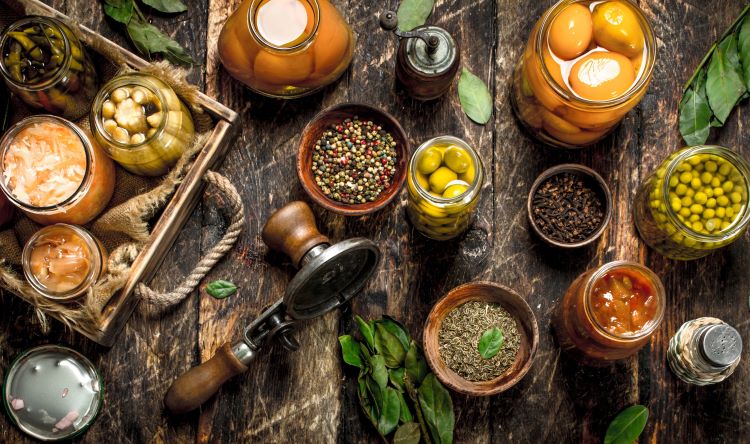
People Also Ask Questions – Addressing Common Curiosities
- Which foods have the longest shelf life?
Foods with the longest shelf life typically include low moisture content, high acidity, or natural preservatives. Examples of such foods include dried grains and legumes, canned goods (such as canned vegetables, fruits, and meats), honey, salt, sugar, vinegar, and some dried herbs and spices. Properly stored and sealed, these items can remain safe for consumption for extended periods, ranging from several months to several years.
- How do you identify if a shelf-stable food has gone bad?
Despite being shelf-stable, certain factors can lead to spoilage in food items. Signs that shelf-stable food has gone bad include appearance, texture, odor, and taste changes. Look for any discoloration, mold growth, unusual smells, or off-flavors. Additionally, check for any signs of packaging damage, such as dents, bulges, or leaks, which can indicate potential contamination or compromised seal integrity. When in doubt, discarding the food is best to avoid the risk of foodborne illness.
- Are there any health risks associated with eating old foods?
Consuming old or expired foods can pose potential health risks, depending on the type of food and the extent of spoilage. As food ages, its nutritional content may degrade, and harmful bacteria or toxins may develop, leading to foodborne illness. Symptoms of food poisoning can range from mild gastrointestinal discomfort to more severe complications, especially in vulnerable populations such as young children, elderly individuals, and those with weakened immune systems. To minimize the risk of foodborne illness, it’s essential to adhere to proper food storage guidelines, regularly inspect shelf-stable items for signs of spoilage, and follow recommended expiration dates. Discarding questionable food items rather than risk potential health consequences is safer when in doubt.
Concluding with Embracing Longevity in Your Pantry
Understanding and utilizing foods with a long shelf life can be a game-changer for meal planning and emergency preparedness. We’ve explored a variety of options, from the reliability of grains and legumes to the innovative solutions offered by freeze-dried products. Remember, the key to maintaining a well-stocked pantry is choosing foods that last and handling and storing them correctly.
Every item mentioned is vital in building a diverse and sustainable food supply. Whether it’s the versatility of dried foods or the surprising longevity of items like honey and salt in their lasting forever quality, you now have the knowledge to make informed decisions. It’s about balancing nutrition, practicality, and shelf life.
You might still have questions or be curious about specific shelf-life tips for foods not covered in this guide. I encourage you to continue your research and contact food safety experts.
Keep your pantry organized, rotate your food, and stay informed on best practices. Doing so will ensure that your food supply is safe and delicious when you need it most.
Do you have any unique ways to store food for the long term? Please leave a comment below telling us what that is. What other food storage process do you want to discuss here? Leave a comment, and I will respond as soon as I can.
